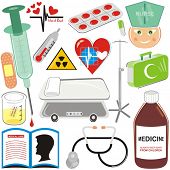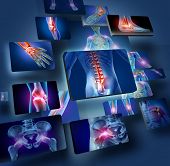Lower back pain relief – Common symptoms, 2 effective exercises and stretches, simple remedies at home, pain relief medicines, creams and products, how to prevent lower back pain from re occuring, correct posture and more
Lower back pain relief – Effective exercises, medicines and treatment at home !
The symptoms of back pain can vary from person to person. It may come on suddenly, perhaps after you’ve lifted something heavy or moved in a way that’s hurt your back. Or it may come on gradually over time or for no apparent reason. The pain can be mild or severe. Some people also have pain in the buttock or down one leg, sometimes as far as the calf or the toes. This is called sciatica.
Most people with back pain symptoms have what’s called non-specific back pain. This means there’s no clear or specific cause (such as an underlying medical condition). It means that often tests can’t really help because no specific damage to the spine or muscles around it would show up on them. This might sound unsettling, but it means that there’s no serious cause for the pain.
2 Lower back pain relief exercises and stretches – for mild pain !
Note: Do not exercise when in severe pain. Do all exercises and stretches when the back pain has subsided. Your physiotherapist is the best choice !
Lower Back Stretch
Stretching your lower back is going to be really helpful in alleviating your lower back pain. Kneel on all fours, with your knees directly under your hips and hands directly under your shoulders. Ensure your spine is in a neutral position. Keep your head in line with your spine, your shoulders back and avoid locking your elbows. Take a big deep breath in and as you breathe out slowly take your bottom backwards towards your heels. Hold the stretch for 20-30 seconds. As you breathe in bring your body up onto all fours again. Repeat six to eight times.
This stretch could make your back condition worse if you have a herniated disc. Discs do not like that amount of flexion. If you do not know what is causing your low back pain it would be wise to be evaluated.
Leg Stretch
It is very common for your hamstring muscles, which are found on the back of your legs, to be very tight when you experience lower back pain. For this reason it is recommended to stretch them out. You can see a great stretch for the hamstrings below. To carry out this exercise, lie on your back with both feet on the floor and knees raised up. Loop a towel under the ball of one foot. Straighten your knee and slowly pull back on the towel. You should feel a gentle stretch down the back of your leg, try not to overdo it. Hold for 20 to 30 seconds. Repeat two times for each leg.
Watch a 8 minute video on 11 Best Lower Back Stretches For Pain & Stiffness !
Best lower back pain relief products, medicines and creams
Nonsteroidal anti-inflammatory drugs (NSAIDs) – such as ibuprofen (Advil, Motrin IB, others) or naproxen sodium (Aleve), might relieve acute back pain. Take these medications only as directed by your doctor. Overuse can cause serious side effects. If OTC pain relievers don’t relieve your pain, your doctor might suggest prescription NSAIDs. If over-the-counter NSAIDs don’t help, your doctor may offer you a higher dose of an NSAID (and also a medicine to protect your stomach).
Antidepressant medicines – are sometimes offered for lower back pain because they can work as painkillers for this condition. The latest expert guidelines don’t recommend using these medicines for lower back pain, though they may be offered for sciatica, a particular type of back pain. If your doctor offers you antidepressants, they’ll explain to you why they think these medicines may be right for you. Low doses of certain types of antidepressants — particularly tricyclic antidepressants, such as amitriptyline — have been shown to relieve some types of chronic back pain independent of their effect on depression.
Muscle relaxants – If mild to moderate back pain doesn’t improve with OTC pain relievers, your doctor might also prescribe a muscle relaxant. Muscle relaxants can make you dizzy and sleepy.
Topical pain relievers – These are creams, salves or ointments you rub into your skin at the site of your pain.
Injections – If other measures don’t relieve your pain, and if your pain radiates down your leg, your doctor may inject cortisone — an anti-inflammatory medication — or numbing medication into the space around your spinal cord (epidural space). A cortisone injection helps decrease inflammation around the nerve roots, but the pain relief usually lasts less than a few months.
Always read the patient information that comes with your medicine carefully. If you have any questions about your medicines or how to take them, ask your pharmacist.
Simple lower back pain relief remedies at home
Build up your lower back muscles
Once your low back pain has receded, you can help avert future episodes of back pain by working the muscles that support your lower back, including the back extensor muscles. Having strong hip, pelvic, and abdominal muscles also gives you more back support. Avoid abdominal crunches, because they can actually put more strain on your back.
Prevention of lower back pain (better than cure / relief)
If you know how to look after your back, you can greatly reduce your risk of getting back pain. It can help to do the following.
Don’t be so immobile anymore
Keep doing your daily activities. Make the beds, go to work, walk the dog. Once you’re feeling better, regular aerobic exercises like swimming, bicycling, and walking can keep you — and your back — more mobile. Just don’t overdo it. There’s no need to run a marathon when your back is sore. Take time to build up your fitness if you’re trying new activities.
Take care when lifting
Always avoid bending or twisting your back. Use your legs to lift objects by bending your knees and hips, not your back.
Try to avoid sitting for long periods
Particularly while working on the workstation. Keep a good posture always. It will help if your employer assesses your work station.
Sleeping posture
If you sleep on your side, you may find it helps to sleep with a small cushion between your knees. If you sleep on your back, try some firm pillows under your knees- this posture is particularly helpful
Tip: If you work from home, take a power nap in the afternoon – as a quick lower back pain relief technique.
Lower back pain relief at work
If you work at a desk job all day, you might have some areas of your workstation to thank for your back pain. Evaluating your space to make it more ergonomic (back-friendly), can help you experience lower back pain relief and prevent pain from getting worse. Rethinking your workspace for back relief starts with positioning your most important work tools.
Key objects – If frequently used objects are too far out of arm’s reach, it can result in repeated twisting that can strain your lower back. To avoid this, keep things you use the most within easy reach. This could include your phone, stapler, pens, notepads, or anything else that gets regular use. If something is too large or heavy to keep near your keyboard, place it where you have to stand to get it to help you resist the urge to twist.
Your chair – Your chair should be at a height to where your feet rest fully and flat on the floor. Your knees should also be level with your hips. If the back rest in your desk chair doesn’t adequately support your back, you may wish to purchase a small lumbar pillow or rolled-up towel to place in your lower back curve.
Your computer monitor – Looking too high or too low at your monitor can affect your posture and therefore contribute to lower back pain. Your monitor should be about an arm’s length away from your chair with the top portion of the screen just a small amount below eye level.
Injury relief to the lower back
When faced with a new injury, first you ice it, then use heat.
If you’ve tweaked your lower back, apply ice during the first 24 to 48 hours. Here’s how you can use ice to your advantage: Place ice cubes or crushed ice in a plastic bag, or purchase a cool pack. Wrap what you’re using in a cloth to protect your skin from injury.
Apply to your lower back for no more than 10 minutes at a time. Repeat as needed throughout the day. Give yourself at least 10-minute breaks between ice applications.
While heat may be tempting to apply after an injury, it can cause your body to release even more inflammatory compounds into your body. After one to two days and for chronic pain, you can begin to apply heat.
The same rules apply as a cold pack – Refrain from applying the heat source directly to your skin. Instead, wrap the heat pack or heating pad in a cloth first. While it can be tempting to sleep with a heating pad all night to relieve your back pain, avoid doing this. You can easily burn your skin if the protective cloth slips away.
Remember: Lower back pain can be a chronic and debilitating condition. Small, daily actions can either help or worsen your discomfort. By taking steps to strengthen, stretch, and protect your back, you can ideally stop or slow pain.
However, severe cases of low back pain can’t always be fixed by lifestyle changes. If your lower back pain interferes with your ability to perform everyday activities, talk to your doctor
ALSO REFER
Online medical assistant schools
Medical billing and coding schools online
Medical billing and coding online courses


